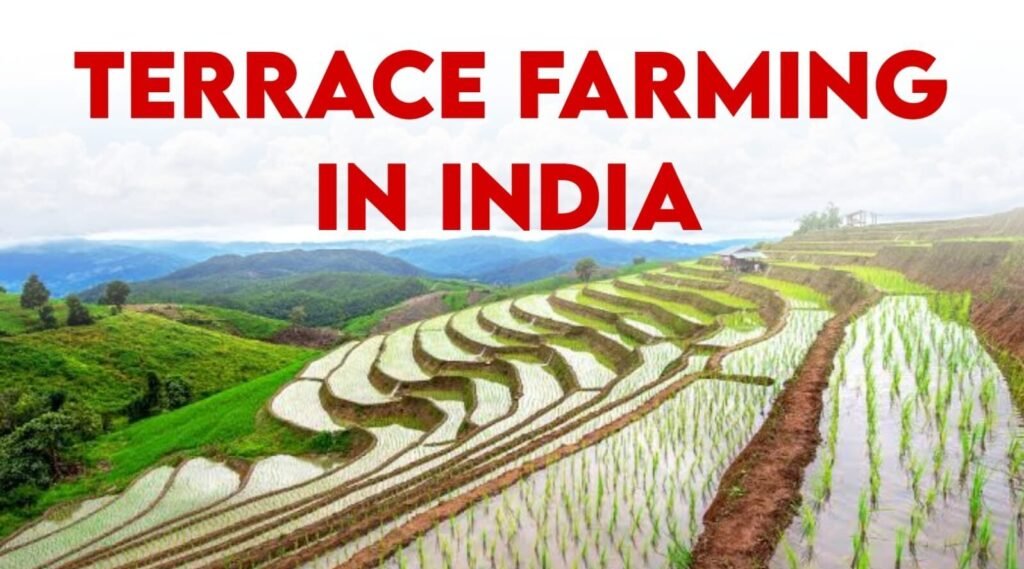Just picture being in the hilly parts of India, where you discover something fascinating. We’ve all heard of the famous Himalayas, Eastern Ghats, and Western Ghats in books, articles, and so on. India is famous for its alluring hills and mountains. Everyone loves to visit these hilly regions during vacations. But do you know? These mountains and hills help in our day-to-day life Yes, it is essential for cultivating crops and providing food for many people.
This method is commonly known as Terrace Farming or Terrace Cultivation, practiced from ancient periods by the people living in hilly areas. These lovely terraces are the result of hardworking farmers shaping the land into beautiful stepped fields for cultivation of crops. Let’s explore India’s heart with me, where these fields reveal a successful story of Terrace Farming. Terrace Farming in India is quite interesting. In this journey we see about Terrace Farming, its importance, different types, its uses and how humans have changed natural resources into valuable gifts for our future. Come with me to know what is Terrace cultivation?
What is Terrace Farming – Definition and Concept
Terrace Farming or Terrace Cultivation is a sustainable method of growing crops in hilly areas. Terrace Farming or Step Farming consists of a series of embankments in the sloped areas to control runoff and improve water infiltration. In simple terms, Terrace Farming is the technique that involves creating steps or terraces in hilly areas where the land is not naturally flat to reduce soil erosion and make them suitable for growing crops.
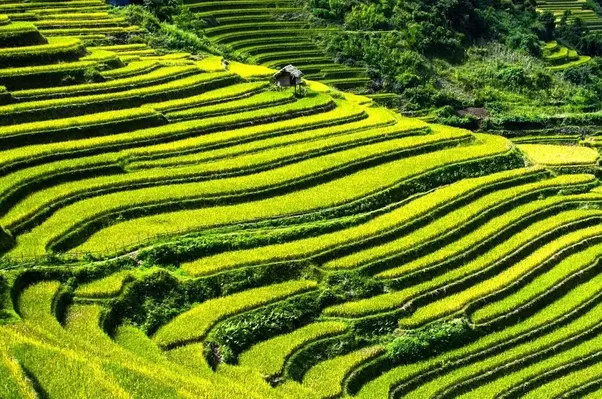
Read More:
- Feeding A Continent Against The Odds: Addressing Challenges of Agriculture in Africa
- Natural Farming VS Organic Farming: 100% Complete Comparison
Types of Terrace Farming
Different types of methods are practiced in Terrace farming in India. Terraces are sorted according to different categories like their alignment, cross-section and outlet. These criteria are selected based on the specific characteristics of mountainous and hilly regions. Here we see the common types of Terrace Cultivation
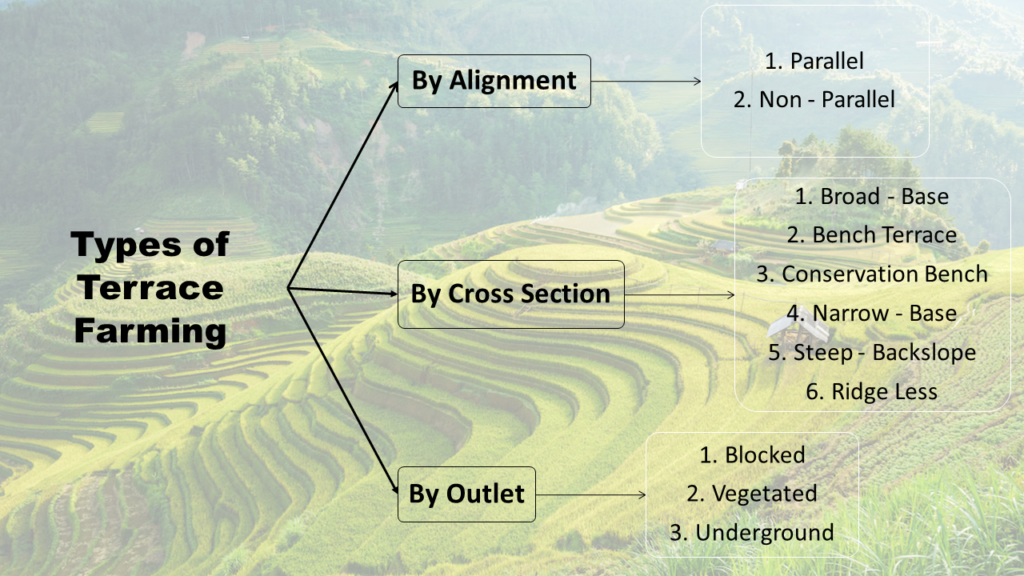
Broad-Based Terraces
Broad base terraces are one of the best method in Terrace Farming in India for constructing ridges using agricultural tools like plows and blades. They are established in areas where slopes of up to 8% exist to manage runoff water in hilly regions. Crops such as rice and maize can be successfully grown on these broad base terraces. By this method, runoff water and soil erosion can be reduced. These terraces has broad base and slopes are flatter so that the cultivation process becomes smoother. These types of terraces utilize the land wisely.
Graded or Channel Terraces
This method is commonly practiced in Terrace Farming in India and suitable for high rainfall areas. In India, this method is primarily used to collect runoff water in the channel and direct it to the outlet. This can be achieved by creating ridges on the upper side of the slope. Channel-type or graded-type terraces are not suitable for sandy and non-permeable soil. The sides of the ridges and channels should be flat for farming operations. These Graded terraces are well suited for areas above 600 mm rainfall. This terrace is used to remove excess runoff water and helps to reduce water logging. Graded or Channel Terraces are classified into two types
- Graded Terrace without Proper Channel
- Graded Terrace with Proper Channel.
Graded Terrace without Proper Channel
These Terrace Cultivation is commonly used for directing runoff water to the outlet. Graded Terraces without Proper Channel is suitable for places where runoff is low. Thus the soil can absorb water and leads to increase in soil moisture.
Graded Terrace with Proper Channel
These Terrace Farming method is used to remove the excess runoff water to control soil erosion. These terraces are constructed in the slope of 5 to 15 % in which the channels are shallow and wide.
Level or Ridge Terraces
Level or ridge-type terraces are one of the methods used for water conservation. These Step Farming method in India are suitable for moderate rainfall areas where the rainfall is stored for a long time. Level terraces are a continuous series of ridges and channels that slow down the runoff water and are used for rainwater harvesting. These terraces are of two types Wide Based Terraces and Narrow Based Terraces.
Narrow Based Terraces
Narrow-based terraces have steep slopes on both the front and back sides. It is the method in Terrace Farming in India which is not suitable for cultivation using implements. The slopes are covered with vegetation. These terraces are effective in reducing soil erosion and runoff. These Narrow Based Terraces have width ranges of 1.2 to 2.5 m. It is the one of the best Terrace Farming method in India also known as Contour Bunds.
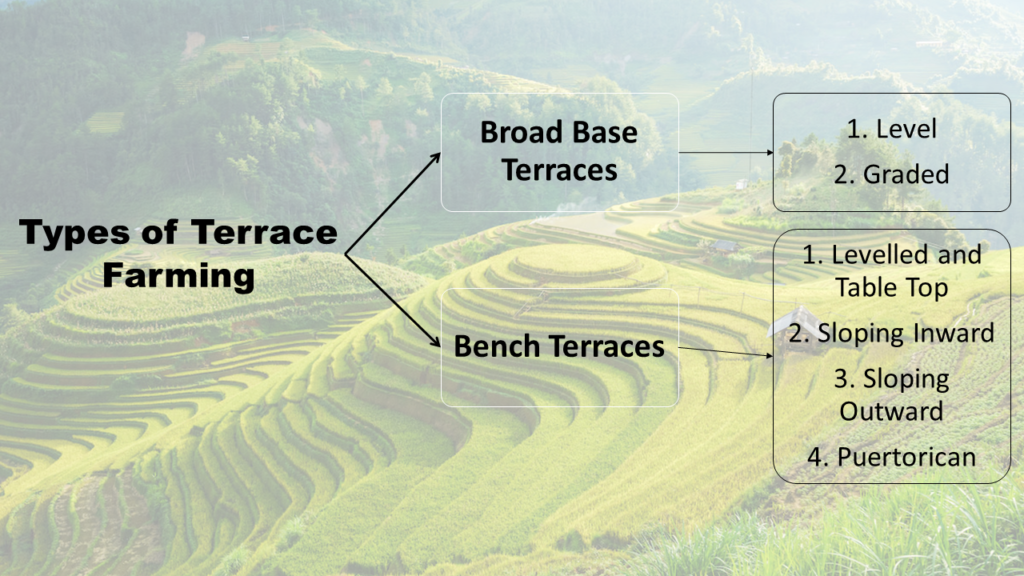
Bench Terraces
Bench terraces are the most commonly used method in Terrace Farming in India constructed to reduce the slope of hills. It is suitable for areas where soil erosion is high and has gradient 15 to 30% or more. Bench Terrace farming is the best soil and water conservation method used to reduce soil erosion and increase infiltration rate. This method is suitable for paddy cultivation. Here we see the different types of Bench Terraces in India based on the crop cultivated.
Different Classifications of Bench Terraces
| S.No | Category | Leveled and Table Top | Sloping Inwards | Sloping Outwards |
| 1 | Type of platform | Flat | Sloping inwards | Sloping outwards |
| 2 | Rainfall | Medium | Heavy | Low |
| 3 | Soil | High Permeable | Permeable | Permeable |
| 4 | Advantages | Reduce runoff | Collects Rainwater | Used for the disposal of water to the outlet |
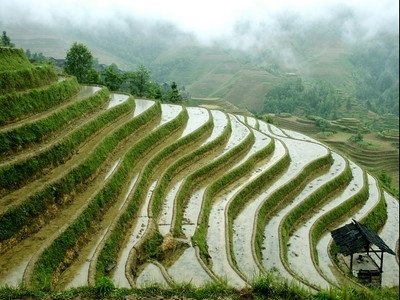
Parallel Terraces
Parallel terraces are best for row crop farming operations that are constructed parallel to each other. These Terrace Cultivation control soil erosion and reduce the flow of runoff. This increases the infiltration rate of the soil and boosts growth.
Storage and Gradient Terraces
Storage Terraces are used to store runoff water until it is removed through the outlet. These Terrace Farming method is best for soil and water conservation. Gradient terraces are constructed perpendicular to the waterways. These terraces are used to transfer water to an outlet.
Grassed Back Slope Terraces
It is the perennial method of Terrace Farming in India in which the back slope is covered with perennial grasses. This provides habitats for animals and birds. The back slope of these Grassed back slope terraces are graded or level.
Read More:
- What is Black Wheat? Exploring Dynamic Black Wheat Benefits
- Is Mushroom Veg or Non Veg? – Let’s Know the Amazing Fact
States Practicing Step Farming in India
Do you know where Terrace Farming is practiced in India? Many states have successfully practiced Terrace Farming in India. They are as follows
- Assam
- Arunachal Pradesh
- Andhra Pradesh
- Himachal Pradesh
- Meghalaya
- Tamil Nadu
- Uttarakhand
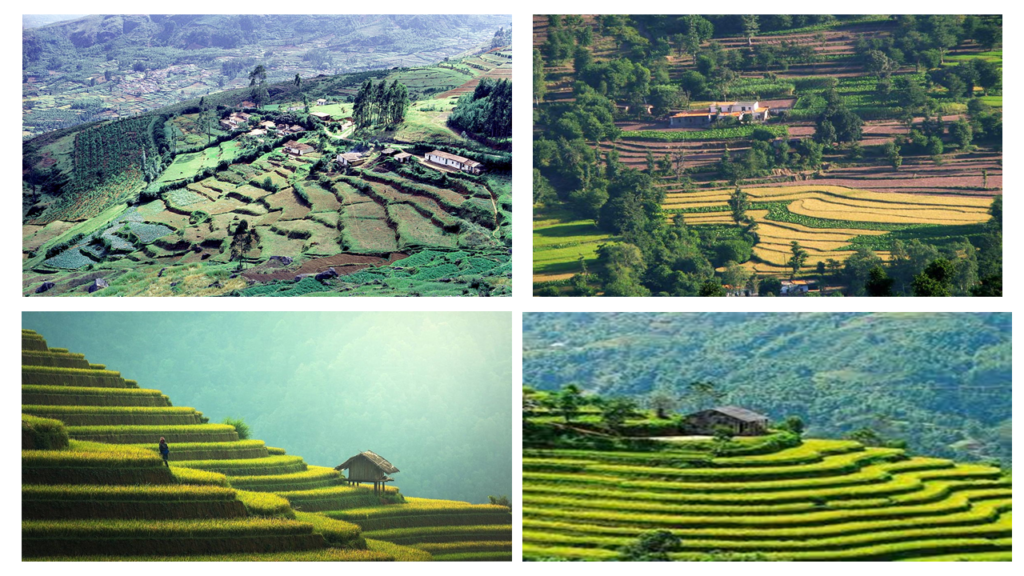
Major Crops Grown in Terrace Cultivation
| Crops | Required conditions |
| Rice | Rice grows well in clay loams and can adapt to different types of soils like red soil, and black soil. ( Optimum pH 5.5 – 6.5 ) |
| Maize | Maize grows well in humid conditions and well-drained soils ( Optimum pH 5.5 – 7.5 ) |
| Soybean | These crops are grown in water stress conditions and are suitable for well-drained soils ( Optimum pH 6.5 – 7.5 ) |
| Onion | Long-day onions are suitable for terraces and sensible to water logging conditions. ( Optimum pH 6.0 – 7.5) |
| Potato | Potato needs a sufficient moisture-rich environment and is suitable for sandy loamy soils. ( Optimum pH 5.5 – 6.5 ) |
| Broad bean | It is the winter crop that grows at a Higher altitude suitable for well-drained loamy soil. ( Optimum pH 5.5 – 6 ) |
Terrace Farming in India: A Success Story
Nagaland is a state in India with mountains and hills. Major crops grown in Nagaland are Rice, Maize, and Pulses. Nagaland is famous for its Jhum Cultivation method. Rice is the major staple crop of Nagaland. These people successfully done paddy cultivation in terrains by using natural resources and sustainable methods. Arunachal Pradesh is a northeastern state in India.The people located in Ziro Valley ( Apatanis ) use efficient techniques of Rice – Fish farming system. This Integrated Rice – Fish farming system is an Eco-friendly and Low-cost method. This creates higher productivity and Business opportunities among the people.
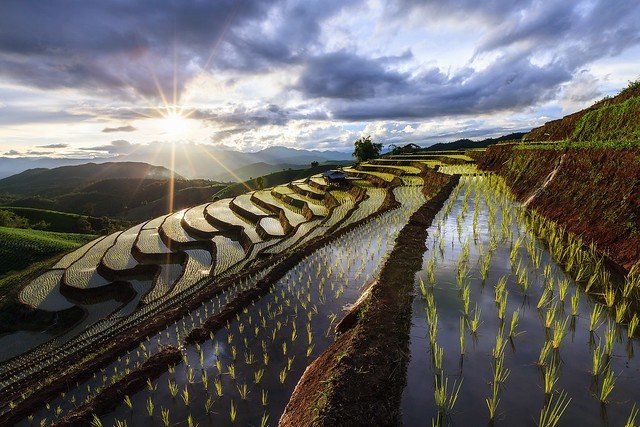
Why Terrace Farming is Important in India
India is a beautiful country that has 30% of mountains and Agriculture plays a major role in the Indian economy. According to the International Food Policy Research Institute, climate change could cause a 16% drop in India’s food production and a 23% increase in the number of people at risk of hunger by 2030. To avoid a food crisis in the future, there is a need to increase food production. The factors that made Terrace Farming in India important are as follows.
Water Conservation
By reducing runoff, the water from the terraces can be collected through outlets. This increases the infiltration rate, soil moisture, and water holding capacity.
Soil Conservation
It controls soil erosions so that sheet erosion, splash erosion, and rill erosion are avoided. This makes them best suitable conditions for the growth of crops.
Increase Crop Yield
It increases agricultural productivity and this helps to increase crop production.
Economic Security
It provides employment and growth for the farmers in hilly regions.
Land Utilization
It increases the use of land in hilly regions. This increases the productivity of the land.
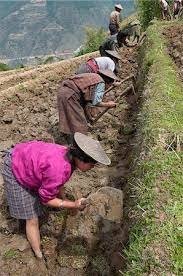
Advantages and Disadvantages of Terrace Farming
Advantages
- The major problem in the hilly areas is runoff. This can be reduced by constructing the slopes into terraces so that the water runoff will be reduced and control soil erosion.
- Terrace Farming helps to retain the soil nutrients and also increases the infiltration rate.
- Cultivating crops in hilly regions prevents landslides which are the major problems in these areas.
Disadvantages
Apart from various advantages, there are some disadvantages in Terrace Farming.
- The Construction of terraces needs heavy machinery and labor and this process is time-consuming.
- If the terrace is designed improperly, it will lead to severe damages including crop loss and gully erosion.
- Soil structure is deteriorated by the construction of the terrace and this cause disrupts the hydrological cycle and nutrient cycle.
Read More:
- 5 Top Tea Producing States in India: Alluring Tea Industry
- Application of Solar Energy in Agriculture in the Modern World
Conclusion
Terrace Farming is not just growing crops, it is the way to make our earth greener and better. Walking amidst the lush green terraces will surely leave you awestruck. There are many wonderful places in India you must visit to experience successful terrace farming, including Chizami, Dangsing, Chakrata, Chataniha, and Sarrah. In this journey, we had seen the importance of Terrace Farming in India. Let’s motivate everyone to use our traditional practices and the nation’s natural resources.


